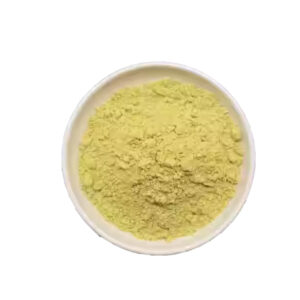Usnic acid
-Plant extracts
1.High quality plant extracts;
2.Organic and Natural;
3.Better stability.
Share the product
Product information

Introduction
Usnic acid is a natural compound extracted from lichens with multiple biological activities, also known as lichenic acid. It usually exists in yellow or yellow-green crystals and is a secondary metabolite produced by lichens during the long-term evolution process.
Ingredients
Usnic acid is a unique dibenzofuran compound with multiple functional groups such as hydroxyl and carbonyl in its chemical structure. The main component is usnic acid itself. In addition, usnic acid extracted from lichens may also contain some small amounts of impurities or other related lichen metabolites, but usnic acid is the main component that exerts various biological activities.
Advantages
Natural antibacterial properties: usnic acid has significant antibacterial effects.
Anti-inflammatory properties: It has anti-inflammatory activity, can inhibit the release of inflammatory mediators and the activity of inflammatory-related enzymes, reduce inflammatory responses, and has potential application value in the treatment of inflammatory-related diseases.
Antioxidant capacity: usnic acid is an effective antioxidant that can scavenge free radicals in the body and reduce oxidative damage.
Natural source: As a natural product, usnic acid has better biocompatibility and lower toxic side effects than chemically synthesized drugs or additives. It is generally safer for the human body and more in line with people’s pursuit of natural and green products.
Application
Cosmetic field:
Skin care products: Added to skin care products, such as creams, lotions, essences, etc., using its antioxidant and anti-inflammatory effects, it can protect the skin from free radical damage, reduce inflammatory reactions, prevent skin aging, and improve skin health.
Food field: It can be used as a natural preservative in the food industry to inhibit the growth of microorganisms in food and extend the shelf life of food. At the same time, due to its natural source, it is more popular with consumers than chemically synthesized preservatives, meeting the food industry’s demand for natural and safe additives.


